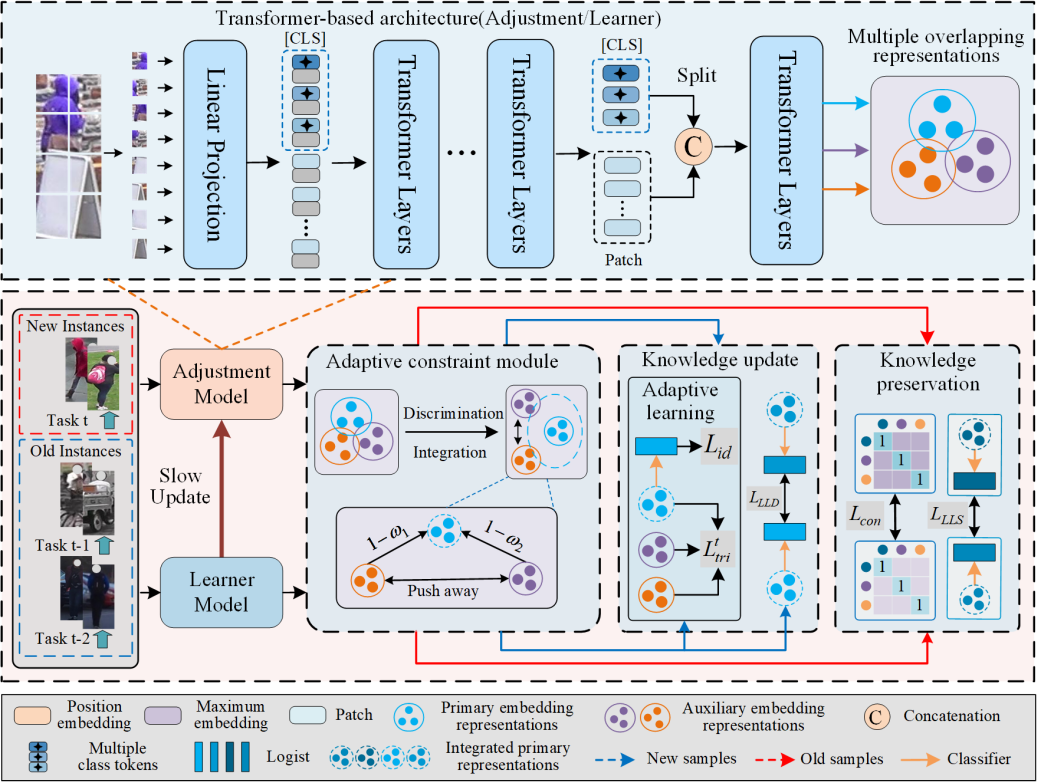
Diverse Representations Embedding Framework for Lifelong Person Re-Identification (Image by the research group)
Lifelong Person Re-Identification (LReID) across scenes is a crucial component of object detection and tracking. It involves continuously learning from sequential data streams to retrieve pedestrians of the same identity across non-overlapping camera views over time. This technology has applications in video surveillance, intelligent security systems, and multi-robot collaborative detection. However, the LReID task often faces challenges such as inter-task gaps and limited model representation capability, hindering the model's ability to balance the old knowledge of anti-forgetting with adaptive learning of new information.
Recently, a research team from the Shenyang Institute of Automation (SIA), Chinese Academy of Sciences (CAS), proposed a Diverse Representations Embedding (DRE) framework, which effectively enhances a model's anti-forgetting capability and adaptive learning performance.
DRE framework employs a Transformer-based backbone network, which utilizes maximization embedding and multiple class tokens to generate diverse representations for each instance. To boost the model's representational power, the team designed an adaptive constraint module (ACM), which performs integration and discrimination operations on overlapping representations to yield diverse representations.
The team also proposed knowledge update (KU) and knowledge preservation (KP) strategies, strengthening the model's adaptability to new information while safeguarding historical knowledge. Extensive experiments validated the effectiveness of the proposed DRE on 11 datasets, including large-scale datasets and occluded scenes.
This research, titled Diverse Representations Embedding for Lifelong Person Re-Identification, has been published in IEEE Transactions on Neural Networks and Learning Systems. Shiben Liu, a Ph.D. student at SIA, is the first author, and Researcher Huijie Fan is the corresponding author.
The research received support from the National Natural Science Foundation of China and the State Key Laboratory of Robotics and Intelligent Systems, among other projects.